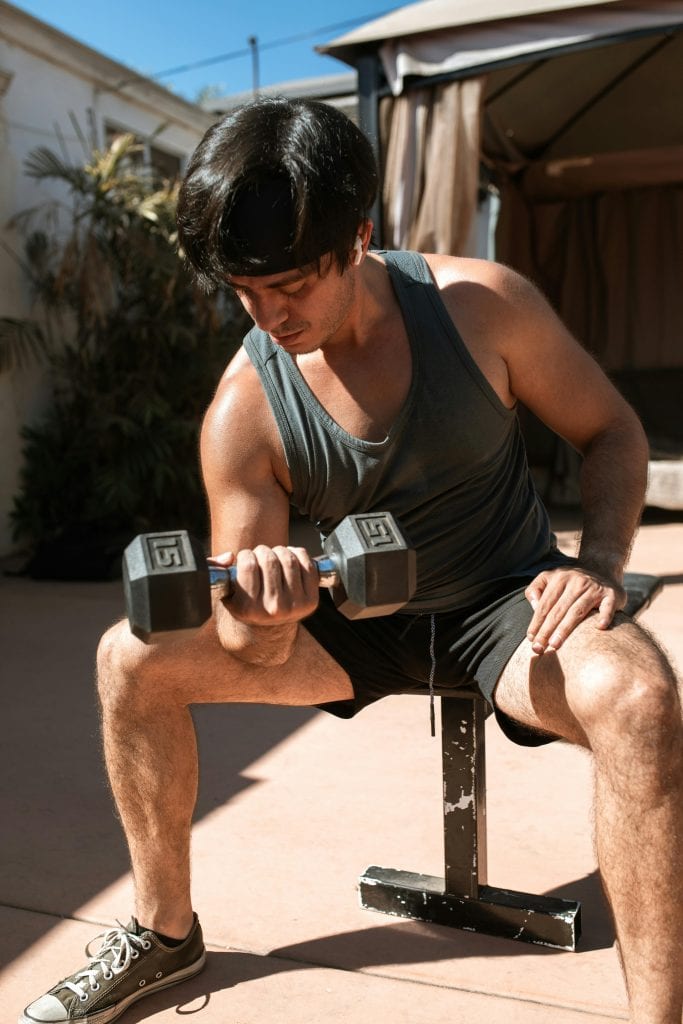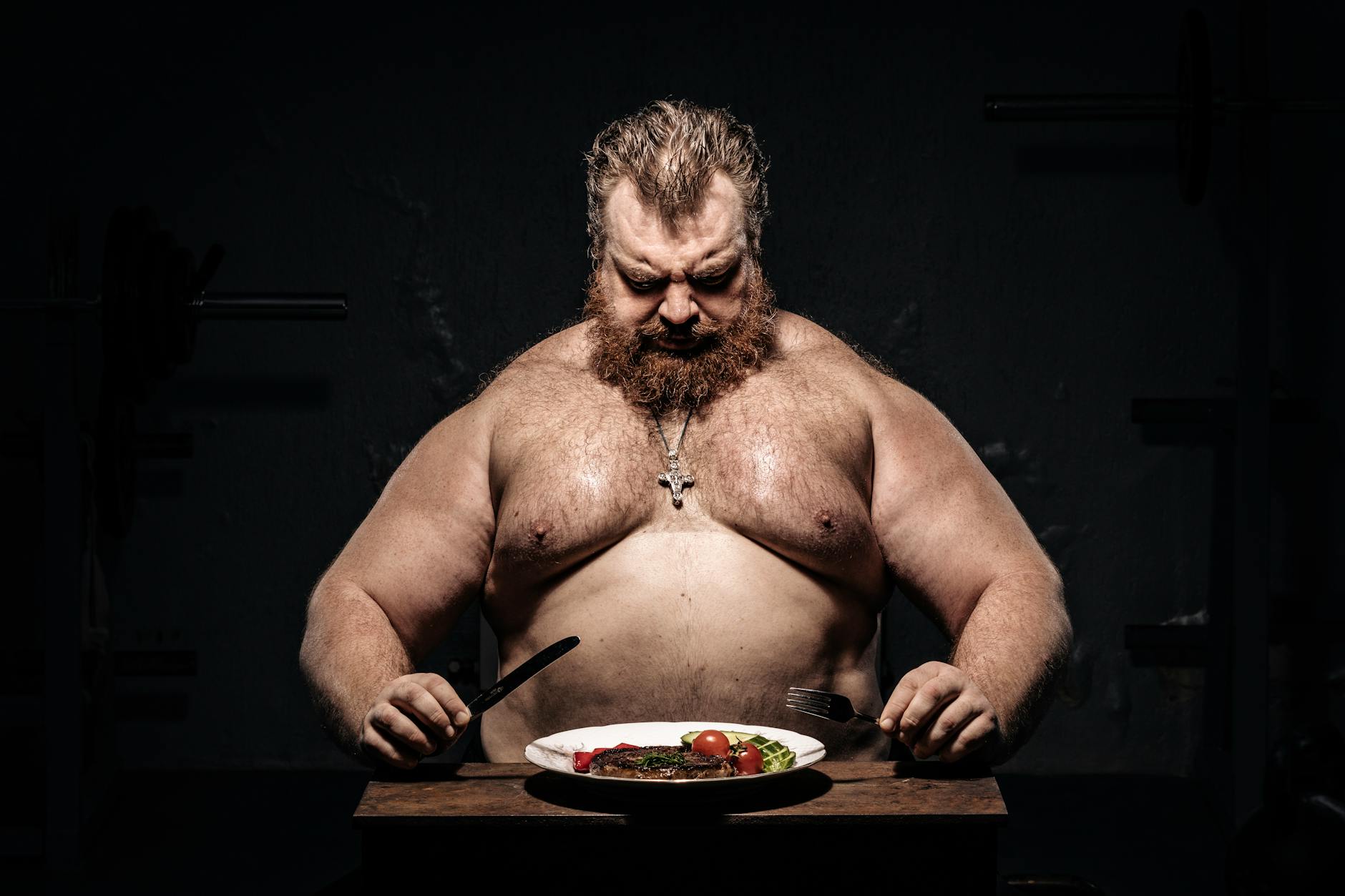How to Create a Muscle-Building Meal Plan for Men Over 30Trying to build muscle after 30 can feel different than it did in your twenties.
With metabolism slowing down and calories needing closer attention, recovery takes longer, and life gets busier with work and family commitments.
That’s why a solid muscle-building meal plan matters more than ever. The right meal plan for muscle gain makes it easier to see real changes in your strength, body fat, and energy levels.
I keep things simple, focusing on everyday foods and proven approaches. I don’t rely on complicated recipes or extreme eating plans.
This guide covers everything you need for successful results—tips for clean eating with healthy foods for beginners, finding a meal plan that fits busy schedules, and choosing the best supplements for fat loss when needed.
I’ll also touch on smart ways to balance building muscle without solely relying on the gym, plus how a fat-burning morning routine can kickstart your day.
If you’re serious about effective nutrition plans and want a mass gain meal plan that really works, you’ll find practical ideas here. It’s all about setting yourself up for success with a plan that fits your lifestyle.
Quick wins like 12 high-protein 5-minute breakfasts can give you a boost and help you stay on track every morning.
Table of Contents
Understanding Muscle Gain Nutrition for Men Over 30
As we age, developing a nutrition strategy for building muscle takes on new importance. In your thirties, the body’s metabolism slows, and recovery after intense workouts can take longer.
The same habits that supported strength and physique in your twenties may not deliver the same results now. Changes in hormone health, energy levels, and muscle recovery mean a focused approach to nutrition is essential.
Building muscle after 30 isn’t just about lifting weights—it’s about fueling your body properly with nutrient-dense foods, balancing real, healthy foods, and timing your nutrient intake to fit your routine.
This guide highlights the key components of an effective muscle gain nutrition plan, emphasizing protein, carbohydrates, fat, and hydration.
Protein Intake: Building Blocks for Strength
Protein is fundamental for muscle growth and repair, and as you get older, maintaining adequate protein intake becomes critical since muscle loss can accelerate without it. Men over 30 generally benefit from consuming around 0.7 to 1 gram of protein per pound of body weight each day.
For example, a 180-pound man should aim for 126 to 180 grams of protein daily. This supports muscle growth, reduces soreness, and speeds muscle recovery after workouts.
The top sources of protein to include in your nutrition for muscle building are nutrient-dense foods such as:
- Skinless chicken breast, lean beef, and turkey
- Fish like salmon and tuna
- Eggs and low-fat dairy products
- Plant-based options like beans, lentils, tofu, tempeh, and quinoa
To optimize protein intake, spread it evenly throughout the day rather than consuming it all in one meal. Try to include 25-40 grams of protein in each meal.
Start with a protein-focused breakfast, enjoy a grilled chicken salad at lunch, snack on Greek yogurt or cottage cheese, and finish with a lean steak or tofu stir-fry. Simple tweaks—such as blending protein powder into oatmeal or choosing string cheese for a snack—help maintain steady protein intake.
For those interested in supplements, I explain my preferred options on my favorite fitness supplements and why I use them.

Carbohydrates and Fat: Balancing Energy and Hormones
Strength and physique aren’t developed by lifting alone; the right macronutrient ratio for energy and hormone balance is equally important. Carbohydrates are the primary fuel your body needs for tackling demanding workouts, busy workdays, and home workout routines when the gym isn’t an option.
Clean carbohydrate, such as brown rice, sweet potatoes, oats, and fruits, provide steady energy to help you power through your day. Incorporating complex carbohydrates into your muscle gain nutrition plan ensures sustained energy without spikes, and pairing them with protein post-workout enhances recovery.
Fats also play an essential yet often underestimated role. These nutrients support hormone production and help your body absorb vital vitamins and minerals, which is especially important after 30 as testosterone and other hormone levels fluctuate. Including sources of fat such as:
- Avocados added to salads or wraps
- Nuts and seeds mixed into snacks or yogurt
- Olive oil drizzled over vegetables
- Fatty fish like salmon or sardines once or twice weekly
helps maintain hormonal balance. Aim to balance each plate with a palm-sized portion of protein, a fist of carbohydrates, and a thumb of fat. This macronutrient ratio helps prevent energy crashes and promotes faster muscle recovery—crucial for managing work, family, and fitness demands.
Hydration and Recovery: Keys to Muscle Growth
Hydration is frequently overlooked but plays a vital role in muscle recovery and overall performance. Even mild dehydration can hinder your workouts and extend the recovery period.
For a busy man over 30 balancing job, family, and efforts like a fat-burning morning routine, staying hydrated is non-negotiable.
Make drinking water throughout the day a habit. Keep a water bottle at your desk and in your car, sipping regularly and refilling at least twice by midday. During long or intense workouts, especially outdoors or in heat, consider adding electrolytes to your water.
After exercise, pairing fluids with a shake or a nutrient-dense meal kickstarts muscle repair and growth. Proper hydration helps nutrients reach your muscles efficiently, reduces soreness, and boosts energy for your next session.
Simple ways to increase your water intake include:
- Carrying a refillable water bottle everywhere
- Drinking a glass of water before each meal or snack
- Choosing water or low-calorie drinks over soda
Achieving your goal to build muscle after 30 is not about chasing every new mass gain eating approach online. Instead, focus on smart, sustainable changes that add up. Your muscle growth nutrition should take into account new lifestyle demands and a slightly slower metabolism.
By dialing in protein intake, balancing carbohydrates and fat, and staying well hydrated, you’ll maximize your workouts—even if you’re committed to getting fit without the gym or starting clean eating for beginners.
Set yourself up with a tailored muscle gain nutrition plan that fits your life, and you’ll build more than just strength—you’ll build lasting healthy habits that support your evolving physique.
Designing Your Meal Plan: Meal Timing, Prep, and Portions
Creating a dietary approach for muscle building that fits real life after 30 focuses on simplicity, consistency, and realism. I organize my day around straightforward meals, smart timing, easy meal prep, and correctly sized portions.
By fine-tuning your routine, you enhance muscle growth, support easier recovery, and even promote fat loss—all while enjoying real, budget-friendly foods. Whether you’re following home workout routines or squeezing in gym sessions, these strategies deliver results.
Sample Eating Plan for Muscle Growth for Men Over 30
A top eating plan for muscle growth helps you meet calories per day targets without stress or guesswork. Here’s a sample day tailored for men over 30 with a balanced macronutrient ratio of protein, carbohydrates, and fat.
This plan is simple to prep, budget-conscious, and fits seamlessly into your schedule—especially if you want to get fit without relying heavily on the gym.
Breakfast (7:00 AM)
- 3 eggs scrambled with a handful of spinach and bell peppers
- 1 cup plain Greek yogurt with fresh berries
- 1 slice whole-grain toast
Lunch (12:00 PM)
- Grilled chicken breast (6–8 oz)
- 1 cup cooked brown rice or quinoa (carbohydrates)
- 1 cup steamed broccoli or mixed veggies
- Drizzle of olive oil
Afternoon Snack (3:30 PM)
- 1 cup cottage cheese with pineapple chunks
- 1 small handful (1 oz) almonds
Post-Workout (5:00 PM, after training or home workout routines)
- Protein shake (20–30 g protein) blended with water or milk
- 1 medium banana
Dinner (7:00 PM)
- Lean beef or turkey burger (6–8 oz), served bun-less or on a whole-grain bun
- 1 cup sweet potatoes (roasted or baked)
- 1 cup steamed green beans or asparagus
Evening Snack (9:00 PM)
- 1/2 cup ricotta or cottage cheese
- 1 small apple or pear
Key points:
- Protein is spread across each meal (25–40 g protein per serving).
- Adjust carbohydrates and fat portions as needed based on your metabolism or activity level to meet your calories per day requirements.
- Switch up protein sources, carbs, or sides for variety and better nutrition.
If you want more examples grounded in science, check out this bodybuilding meal plan guide from Healthline. For plant-based or budget-friendly variations, focus on nutrient-dense foods like beans, lentils, and tofu, as well as peasant-style meals that stretch your dollar.
Meal timing makes a difference. Spacing meals with purpose—morning fuel, post-workout nourishment, and an evening snack—supports muscle building and provides steady energy for work, family, and late-night routines. Interested in daily eating patterns? These natural fat-burning strategies break down ideas using practical eating windows.
Meal Prep Tips for Busy Schedules
Effective meal prep isn’t just for bodybuilders or social media influencers. If you’re juggling work, travel, or family life, you need real tactics to keep your lean bulking meal plan on track—without spending all day in the kitchen.
- Prep protein in bulk: Grill, bake, or slow-cook several pounds of chicken, turkey, or lean beef at once. Portion into containers for quick lunches and post-workout meals.
- Batch cook your carbohydrates: Prepare large batches of brown rice, oats, or sweet potatoes. Store separately so you can easily mix and match throughout the week.
- Plan quick veggies: Pre-wash salad greens, steam or roast big trays of broccoli, carrots, or green beans, and keep in grab-and-go containers.
- Make use of appliances: A slow cooker or pressure cooker lets you toss in protein and veggies in the morning so dinner’s hot and ready by evening.
- Smart snacks for work or travel:
- Single-serve Greek yogurt, cheese sticks, or cottage cheese
- Homemade trail mix (nuts, seeds, and a few dried fruit pieces)
- Hard-boiled eggs
- Peanut butter packs with a piece of fruit
Easy portion control:
If you’re managing weight and metabolism after 30, monitoring portions is crucial. Use your hand to estimate servings:
- Palm = protein serving
- Fist = carbohydrates
- Thumb = fats
Start with these macronutrient ratio guidelines and adjust if energy dips or recovery slows. When your schedule gets hectic or you travel, pack a sturdy cooler bag with nutrient-dense foods and pre-portioned meals.
This keeps your gains on track and avoids fast food or vending machine pitfalls.
For additional support managing hunger and snacking, check out these top weight loss supplements 2025 to learn about products that work effectively without wasting money.
Still searching for ways to fit a bulking eating plan into a busy lifestyle? This clear guide on 7-day meal prep for building lean muscle offers tips and sample templates.
Building lean muscle after 30 isn’t about perfection—it’s about forming sustainable routines like advance prep, strategic meal timing, and portion control to promote steady strength gains and better health, whether you’re focusing on clean eating for beginners or a fat-burning morning routine.
Supplements, Lifestyle, and Fat Loss: Maximizing Muscle Gains After 30
Building strength and cutting body fat after 30 requires more than just tracking calories and spending time in the gym. The real advantage comes from focusing on the details: targeted supplements, daily routines, and training you can maintain long-term.
To get the most from your muscle building efforts, you need to prioritize recovery, clean eating, and habits that support balanced nutrition.
Effective Supplements for Muscle Growth and Fat Loss

Supplements help fill nutrition gaps during busy days or when your appetite falls short. I keep my selection simple and science-backed—no chasing trends. For men over 30, two essentials are whey protein and creatine:
- Whey protein: Supports protein intake on the go, helping you meet bulking meal plan needs when hunger is low. It’s easy to add to oats or shakes for a quick nutrient boost.
- Creatine: Proven to enhance training intensity and aid muscle recovery, creatine is key for maintaining strength and encouraging muscle growth as we age.
If your focus is cutting fat while preserving lean mass, many fat-burning supplements promise quick results. Most only offer modest benefits compared to a solid diet and consistent training routine. Opt for simple blends with familiar ingredients like caffeine (if tolerated), green tea extract, or basic thermogenics.
Never rely solely on supplements, and consult your doctor before adding fat-burning products, especially if you have medical conditions or take medications.
The key points are:
- Begin with a lean bulking meal plan—supplements enhance results but don’t replace whole foods.
- Use supplements strategically to support protein intake and muscle recovery.
- Combine any fat-loss supplements with healthy habits rather than using them as shortcuts.
For meal ideas and supplement timing, you can check out this bodybuilding meal plan overview with practical advice.
Lifestyle Tips: Routines and Clean Eating for Beginners
A well-structured muscle building diet works best alongside a consistent daily routine. Every productive day starts with a fat-burning morning ritual, which includes:
- Drinking a large glass of water immediately.
- Moving for five to ten minutes—consider a brisk walk, squats, or stretching.
- Eating a protein-rich breakfast such as eggs, Greek yogurt, or a protein smoothie.
These practices kickstart your metabolism, support muscle maintenance, and set a positive tone.
When it comes to clean eating for beginners, focus on nutrient-dense foods:
- Prioritize lean proteins, whole grains (providing healthy carbohydrates), and lots of vegetables at every meal.
- Limit refined carbs, fried foods, and added sugars.
- Plan balanced meals and snacks ahead of time to stay consistent.
A few guiding principles I follow:
- Aim for 25–40 grams of protein at each meal.
- Drink water steadily throughout the day.
- Eat whole, single-ingredient foods about 80% of the time.
- Allow occasional treats so you don’t feel deprived.
Quality sleep and stress management are just as important as diet. Getting seven to nine hours of restful sleep supports muscle recovery and balances hormones.
Manage stress through simple daily rituals—breathing exercises, light stretching, or brief walks—to avoid stress-related calorie binging and keep your body optimized for fat loss.
Exercise and At-Home Options for Busy Men

You don’t need a fancy gym or hours of exercise to see progress. Staying fit without the gym is not only practical but often the best approach for men over 30 juggling busy lives.
Training basics: Focus on compound movements like squats, push-ups, and rows. These deliver the most muscle-building return for your effort. Two to three full-body sessions per week are enough for steady improvements.
Home workouts can be efficient and effective. I use adjustable dumbbells, resistance bands, and bodyweight exercises for a convenient and progressive routine.
Try this simple home circuit:
- 10–15 push-ups
- 15–20 bodyweight squats
- 10 bent-over rows (using dumbbells or bands)
- 10 lunges per leg
- 30–45 seconds plank
Repeat three times with 60 seconds rest between sets. This circuit targets major muscle groups and raises your heart rate when performed with purpose.
Combine this with your lean bulking meal plan, and you’ll notice energy and results build steadily—even without gym access. A focused home workout routine alongside clean eating and smart supplements creates the ideal foundation for muscle building and sustained fat loss.
For additional meal ideas and practical home workout guides, explore the 7-Day Meal Plan to Gain More Muscle featuring templates for all levels.
Building strength after 30 doesn’t require complicated diets or extreme regimens. Simplicity, consistency, and thoughtful choices always provide the greatest advantage.
Frequently Asked Questions About Muscle-Building Meal Plans for Men Over 30
When you reach your thirties, building lean tissue requires more focus and strategy than ever before. Real life introduces new challenges—busier schedules, slower muscle recovery, and the importance of smart nutrition choices.
Many men wonder how to adjust their dietary plan for these changes. In this section, I address the most common questions. For more information, you can always visit the FAQs for Fit With Greg for additional insights.
How Much Protein Do I Really Need for Muscle Gain After 30?
Most men over 30 should aim for 0.7 to 1 gram of protein per pound of body weight daily. For example, a 180-pound man needs roughly 126 to 180 grams of protein intake each day. Distribute your protein evenly across all meals—not just dinner—so your muscles receive a steady supply.
Incorporate protein-rich shakes or snacks during busy days, especially if you follow intense home workout routines.
Can I Build Muscle and Lose Fat at the Same Time?
Yes, with dedication to your muscle building dietary plan and effective training. Keep your protein intake high, maintain a small calorie deficit, and emphasize strength training.
Incorporating short bursts of clean cardio and a fat-burning morning routine helps increase calories burned and boost metabolism. For deeper guidance on bulking and cutting phases, check out this Muscle Gain and Fat Loss Meal Plan Guide from Men’s Health that explains optimal calorie timing and food choices.
Do I Need Supplements, or Is Food Enough?
Whole foods should always be the foundation of a solid nutrition approach. However, supplements can support hitting your targets, particularly on busy days or when your appetite wanes. Options like whey protein, creatine, and basic fat-burning supplements can simplify progress but should be used tocomplement—not replace—real meals.
What If I Don’t Have Time for Meal Prep?
You’re not alone. Life can make meal prep challenging. Focus on batch cooking proteins, buying pre-cut vegetables, and stocking up on easy snacks such as nuts or cottage cheese. When travel or work gets hectic, stick to simple rules: prioritize protein, watch portion sizes, and stay hydrated.
For those seeking tips on “getting fit without the gym,” prepping basic building blocks in advance is a game-changer.
How Can a Mass Gain Nutritional Plan Support Hormone Health?
A high calorie muscle gain plan provides more than just energy for building; it also promotes testosterone and overall hormone balance by including healthy fats, quality carbohydrates, and plenty of vitamins.
Aim for a variety of lean proteins, whole grains, nuts, seeds, and lots of veggies. For men over 30, these healthy foods help maintain steady hormone levels and optimize muscle recovery.
Is Clean Eating for Beginners Necessary for Muscle Gain?
Starting with clean eating for beginners can simplify your journey. Focus on single-ingredient foods, avoid deep-fried or heavily processed items, and cook as much as possible at home.
This strategy not only supports energy levels but also enhances muscle recovery and fuels both exercise and daily activities with balanced nutrition.
Can I Use Home Workout Routines and Still Make Progress?
Absolutely! Home workout routines can yield excellent results when you remain consistent and challenge yourself. Focus on compound exercises—like squats, push-ups, and planks—and aim to progressively increase your reps or resistance.
Pairing these sessions with a well-designed muscle-building meal plan aligning with your macronutrient ratio helps build strength without a gym membership. The Ultimate At-Home Fitness Stack Guide offers practical advice for maximizing results at home.
What’s the Best Dietary Plan for Muscle Growth If I Have a Busy Job?
Choose simple, balanced meals that come together quickly. Prepare proteins and carbohydrates in bulk once or twice weekly. Supplement with convenient snacks like hard-boiled eggs, yogurts, or ready-cooked chicken strips.
Explore these 7-day muscle gain meal plan ideas for quick recipes and effective meal prep strategies tailored to busy lifestyles.
Do Fat-Burning Supplements Help with Meal Planning?
Fat-burning supplements can be useful tools, but they’re not shortcuts. The best diet for muscle growth keeps your nutritional intake consistent and provides steady energy.
If you include supplements, ensure they complement your muscle gain nutrition plan and always combine them with regular training, a clean eating regimen, hydration, and adequaterest for optimal results.
For more detailed nutrition advice or building tips, guides like this Bodybuilding Meal Plan from Healthline offer clear explanations on which foods to choose and which to avoid.

Photo by Alexa Popovich
Conclusion
Building a muscle-building meal plan for men over 30 starts with being honest about what works at this stage of life. I focus on eating enough protein, incorporating quality carbohydrates and healthy fat, and staying well hydrated to support better muscle recovery.
Developing practical habits like meal prep and spacing meals throughout the day makes following my plan simple and stress-free.
Choosing exercise routines that fit real-life demands, such as home exercise routines or a fat-burning morning routine, supports lean muscle gain and keeps me consistent even when life gets busy.
Adding targeted support like the best supplements for fat loss or reliable fat-burning supplements can fill nutrition gaps, but I always prioritize solid meals and a balanced diet over extreme eating plans.
Clean foods and eating for beginners are easy wins that help build sustainable habits for lasting muscle growth.
Taking action is the most important step. I start small, adjust as needed, and focus on steady progress with my muscle gain nutrition plan. Every meal, exercise session, and habit contributes to my goal of building lean muscle over time.
If you want tips to start at home, check out my guide on simple equipment-free workouts to start today.
Thanks for reading and taking the first step toward building a healthier, stronger version of yourself after 30.
The best change happens when you begin—your new muscle building meal plan starts now.

